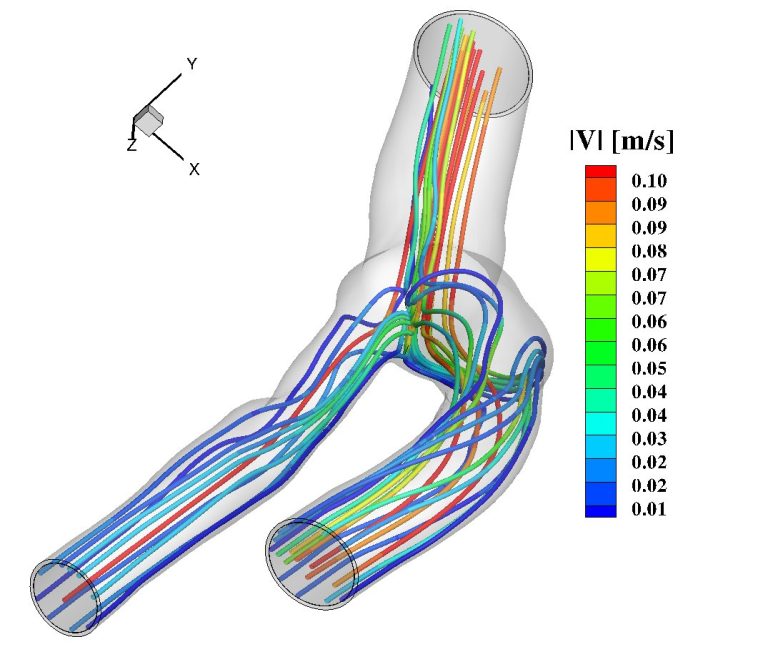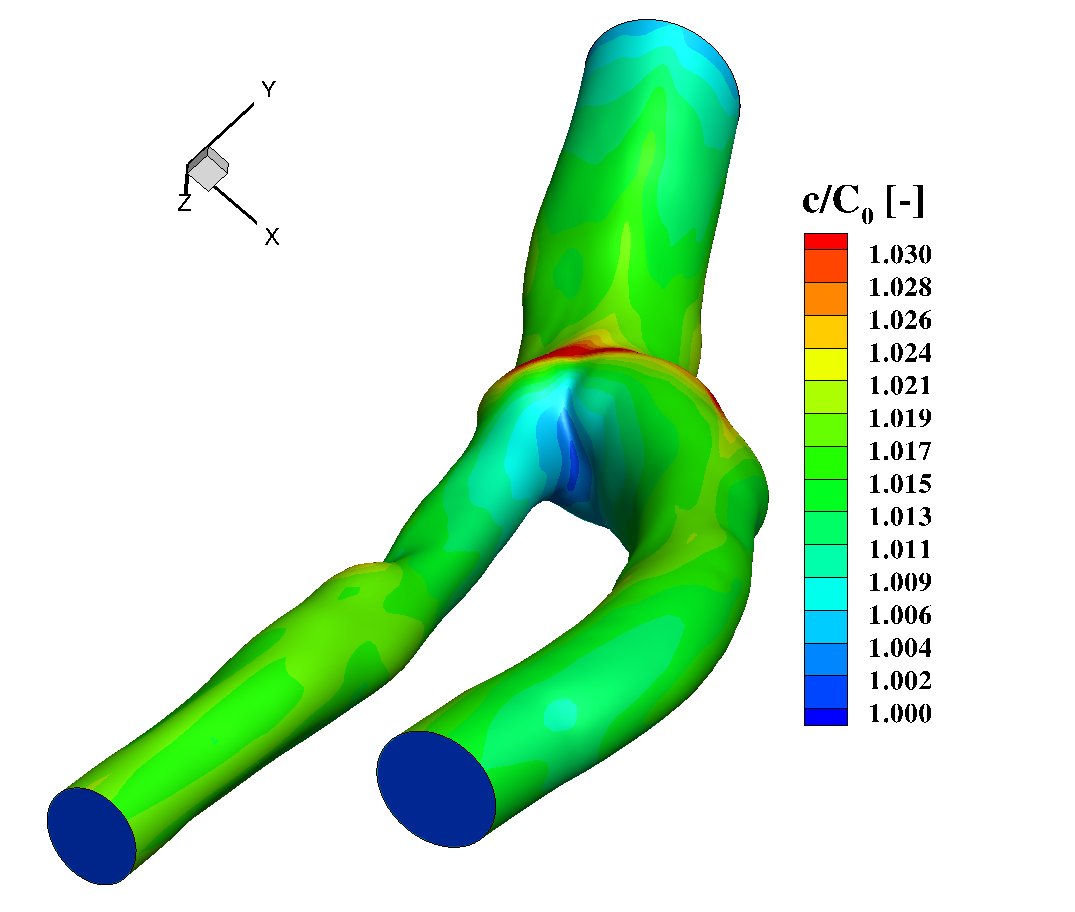TU Delft researchers have developed a mathematical model that shows where exactly cholesterol will accumulate in a carotid artery. The Royal Society Interface published their findings last week.
The development of atherosclerosis is a scary scenario. Helped by hypertension, diabetes, obesity, smoking and/or infections, bad cholesterol or low-density lipoprotein (LDL) builds up in your arteries. This study focuses on the neck artery called the carotid artery. The LDL will migrate through the inner artery layer and settle into the artery wall. Here, the LDL may come into contact with oxygen and that will change its phase from liquid to sponge-like. Over time, the mass in the artery wall will build up, called a plaque formation, cause infections and start restricting the blood flow to the brain. This may result in strokes.
The research that Dr. Sasa Kenjeres (Transport Phenomena Section at Department of Chemical Engineering, Faculty of Applied Sciences) and M.Sc. student Alexander de Loor (Burgers Centre for Fluid Dynamics) presented in the Journal of the Royal Society Interface shows that there is a strong dependence between the feared uptake of LDL in the artery wall and the underlying local blood flow pattern.
They calculated the flow through the carotid based on a 3D reconstruction of CT-scans and the ultrasound blood flow measurements of a healthy person, courtesy of Dr. Frank Gijsen of the Erasmus Medical Centre Rotterdam. The diameter of the artery is about 6.5 millimetres before the split and its total length 12 centimetres. After the split, the diameters are 4 and 3.2 millimetres respectively. The blood flow is laminar with a maximal speed of 0.34 m/s in the centre.
To model the penetration of LDL into the artery wall, the researchers have set up a four-layered artery for their simulations: endothelium (2 microns), intima (10 microns), internal elastic layer (IEL, 2 micron) and media 0.2 millimetres).
Their calculations of the flow through this realistic and healthy carotid show that intense swirling flows occur at about a quarter length before the split. At the spot where the wall shear stress is minimum, the transport from LDL into the artery wall is at its peak.

Although the peak is modest, with an increase of 3%, it identifies the region of locally elevated accumulation of the LDL. Increased levels of the blood pressure can significantly increase these peak values (up to 15-20%).
Although the computer simulations correspond very well with experimental studies on rabbits (from the literature), the researchers believe further improvements of their model are possible. For instance, the modelled artery walls are stiff instead of compliant. Plus the inflammatory process is not included.
Extending the model will, the authors hope, not only offer a better understanding of the atherosclerotic plaque formation, but also help to point out which people, on the basis of a CT-scan, are most at risk of developing the disease.
Sasa Kenjeres and Alxander de Loor (2014), Modelling and simulation of low-density lipoprotein transport through multi-layered wall of an anatomically realistic carotid artery bifurcation, Journal of the Royal Society Interface 11: 20130941, pp.1-13; November 28, 2013.



Comments are closed.